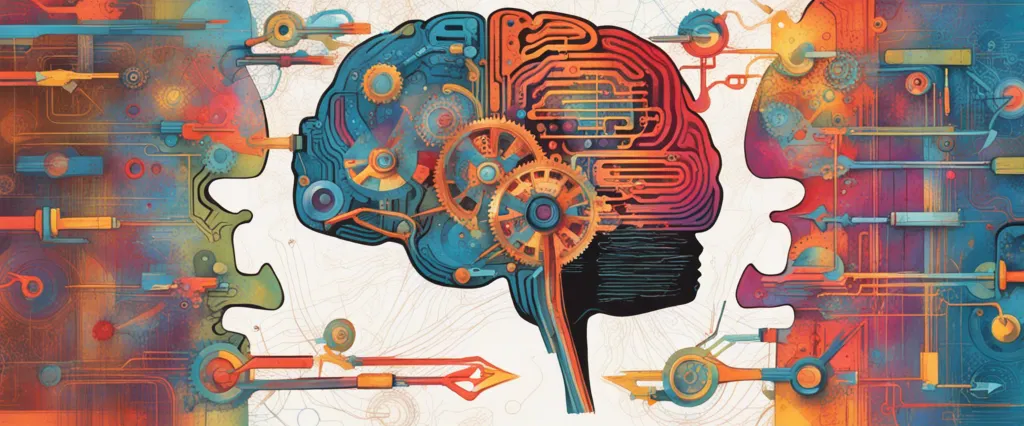——Evolutionary Psychology by David M. Buss & The Story of the Human Body by Daniel E. Lieberman

In the quest to understand the depths of human behavior and the intricacies of our past, evolutionary psychology and the study of human anatomy have emerged as compelling fields of exploration. These scholarly realms, while distinct in their approaches, both seek to unravel the mysteries of our existence by examining the forces that have shaped us over the millennia. Two prominent authors, David M. Buss and Daniel E. Lieberman, have penned insightful works that delve into these subjects, offering valuable perspectives on the human condition from different angles. Buss’s “Evolutionary Psychology” and Lieberman’s “The Story of the Human Body” both invite readers on thought-provoking journeys through our evolutionary history, inviting us to reflect upon our innate behaviors, physical adaptations, and the intertwined relationship between our bodies and minds.
Evolutionary psychology, as expounded by David M. Buss, presents a framework that views human behavior through the lens of natural selection. By examining the evolutionary roots of behavior, Buss strives to uncover the enduring patterns that have shaped our psychological makeup. Drawing upon a rich tapestry of research, he explores topics such as mate selection strategies, jealousy, aggression, and various cognitive processes that challenge and illuminate our understanding of human behavior. Buss’s work presents a comprehensive synthesis of theories and empirical studies, providing readers with a compelling argument for the evolutionary roots of our psychological traits and illuminating the adaptations that have allowed our species to survive and thrive.
In “The Story of the Human Body,” Daniel E. Lieberman takes a slightly different approach, shifting the focus towards the physical adaptation of the human body over time. Lieberman delves into the intricate relationship between our evolutionary past and our contemporary lifestyles, highlighting the mismatch between our ancient biology and the modern world we inhabit. Through a captivating narrative, he explores how our bodies have adapted to the challenges our ancestors faced, ranging from bipedal walking to our nutritional needs. Lieberman delves into captivating discussions about the implications of a sedentary lifestyle, the paradox of obesity in the face of food abundance, and how our modern habits can lead to numerous health problems. His work encourages us to reflect upon the consequences of our choices and the potential for reclaiming a healthier, more harmonious relationship with our biological nature.
While Buss and Lieberman approach the study of human evolution from different perspectives, their works converge upon a common notion: the understanding and appreciation of our natural history hold the key to unlocking the mysteries of the human condition. By combining the insights provided by evolutionary psychology and the story of the human body, we can begin to trace the intricate paths that have led us to this moment in time, shedding light on our behaviors, capabilities, and vulnerabilities. In this comparative study, we will delve into the depths of Buss’s “Evolutionary Psychology” and Lieberman’s “The Story of the Human Body,” examining their unique contributions to our understanding of human nature while uncovering the threads that connect these two enlightening perspectives on our past and present.
Brief Summary of Two Books
Evolutionary Psychology by David M. Buss
“Evolutionary Psychology” by David M. Buss is a comprehensive introduction to the field of evolutionary psychology. The book explores the idea that the human mind is a product of natural selection, shaped by evolutionary pressures over thousands of years. Buss discusses various key topics in the field, such as mating strategies, jealousy, aggression, parental investment, and cooperation.
The first part of the book delves into the principles of evolutionary psychology, highlighting the importance of natural selection and the genetic basis of behavior. Buss explains how certain behaviors and psychological traits are evolutionarily advantageous and have been preserved in humans throughout history.
The second part focuses on mating strategies and sexual selection. Buss explores the different tactics that males and females employ to maximize their reproductive success, including mate preferences, mate guarding, and infidelity. He also delves into the concept of human nature and how evolutionary psychology can provide insights into universal human behaviors and preferences.
The third part of the book delves into the complexities of social behavior and cooperation. Buss highlights the evolutionary roots of altruism, kinship, reciprocity, and competition. He explains how these behaviors have evolved to increase the chances of survival and reproductive success.
Throughout the book, Buss provides numerous examples and studies from various cultures and societies to support his arguments. He also discusses various criticisms and debates within the field of evolutionary psychology, acknowledging its limitations and addressing alternative perspectives.
Overall, “Evolutionary Psychology” offers an illuminating exploration of how evolution has shaped human psychology and behavior. It presents an evolutionary framework to understand various aspects of human behavior, providing a valuable resource for students, researchers, and anyone interested in understanding the human mind from an evolutionary perspective.
The Story of the Human Body by Daniel E. Lieberman
“The Story of the Human Body” by Daniel E. Lieberman is a scientific exploration of human evolution and how our bodies have evolved throughout history. The book explains how our anatomy, adaptations, and behaviors have been shaped by natural selection and the challenges we faced as a species.
Lieberman begins by examining the origins of the human lineage and our early ancestors, discussing how bipedalism, our unique form of locomotion, shaped our bodies. He delves into the impact of various factors like diet, physical activity, and social structures on our evolution, highlighting how our bodies have adapted to particular environments and lifestyles over time.
The author also discusses the role of culture and technology in influencing our bodies, particularly as modern humans have diverged from our ancestral ways of life. He explores how agriculture, sedentary living, and the modern industrialized world have presented new challenges to our bodies that were not encountered in our evolutionary past.
Throughout the book, Lieberman emphasizes the importance of understanding our evolutionary history in order to mitigate the negative consequences of our sedentary, modern lifestyle. He calls attention to the widespread prevalence of modern diseases like obesity, diabetes, and cardiovascular disorders, linking them to our genetic predispositions and mismatched environments.
Ultimately, “The Story of the Human Body” provides an engaging synthesis of scientific research, evolutionary biology, and anthropology to shed light on the amazing journey of human evolution, its impact on our bodies, and the challenges we face in the modern world.
Comparison between Two Books

Similarities in Anthropology
Both “Parallel Evolutionary Psychology” by David M. Buss and “The Story of the Human Body” by Daniel E. Lieberman discuss various aspects of anthropology, albeit from different perspectives.
1. Common focus on human evolution: Both books acknowledge the significance of human evolution in understanding the origins and characteristics of modern humans. Buss explores how evolutionary processes shaped the human mind, behavior, and social interactions. Lieberman, on the other hand, delves into the evolutionary history of the human body, examining how our anatomy has evolved over time.
2. Emphasis on adaptive traits: Both authors emphasize the idea that human traits and behaviors evolved to serve specific adaptive functions. Buss highlights how various psychological mechanisms evolved in response to the challenges our ancestors faced, such as mating, social cooperation, and resource acquisition. Likewise, Lieberman explores how our physical characteristics, like bipedalism or our ability to store fat, have developed to adapt to changing environments and improve survival.
3. Interdisciplinary approach: Both books adopt an interdisciplinary approach to anthropology. Buss draws on findings from evolutionary biology, psychology, anthropology, and other fields to develop his arguments. Similarly, Lieberman synthesizes information from paleontology, archeology, biology, and other disciplines to examine the evolution of the human body.
4. Consideration of cultural influences: Anthropology is not only about the biological nature of humans but also about the impact of cultural and social factors. Buss and Lieberman both recognize that while human biology plays a significant role, culture shapes our behavior and evolution. Buss explores how culture interacts with evolutionary processes to influence mating strategies, social norms, and gender roles. Lieberman examines the influence of cultural factors, such as shifts in diet and lifestyle, on our physical evolution.
5. Evolutionary mismatch: Both authors recognize the concept of evolutionary mismatch, which suggests that modern humans often face challenges that are incongruent with the adaptations their ancestors developed. Buss explores how our modern environment may lead to psychological maladaptations, including anxiety, depression, and addiction. Lieberman highlights how our sedentary lifestyle and availability of processed foods have resulted in health problems that our bodies are ill-equipped to handle.
In summary, both “Parallel Evolutionary Psychology” by David M. Buss and “The Story of the Human Body” by Daniel E. Lieberman delve into anthropology from different angles, yet share similarities in their focus on human evolution, adaptive traits, interdisciplinary approaches, consideration of cultural influences, and recognition of evolutionary mismatch.
Divergences in Anthropology
Evolutionary Psychology by David M. Buss and The Story of the Human Body by Daniel E. Lieberman are two influential works that explore the evolution and behavior of the human species. While both books delve into the realm of biology and evolutionary theory, they differ in their perspectives on anthropology.
Anthropology, the study of humans and their societies, is approached from various angles in these books. Evolutionary Psychology primarily focuses on the psychological mechanisms that evolved in humans over time. David M. Buss analyzes how these psychological adaptations have shaped our behavior and cognition, from mate selection to emotions and aggression. He offers insights into human nature by examining these adaptations within the context of evolutionary theory.
On the other hand, The Story of the Human Body by Daniel E. Lieberman takes a more comprehensive approach, encompassing anthropology alongside biology. Lieberman explores how our bodies have evolved over millions of years and how this evolution has influenced our anatomy and physiology. In tracing the lineage of the human body, he discusses our ancestors’ diets, our ability to walk and run, and the significance of our unique features. By contextualizing human evolution within the broader context of anthropology, Lieberman provides a more holistic perspective on the human experience.
The divergence between these books lies in the emphasis they place on anthropology. Buss’s Evolutionary Psychology highlights the psychological aspects of human behavior, while anthropological elements take a secondary role. In contrast, Lieberman’s The Story of the Human Body intertwines anthropology with biology to provide a deeper understanding of our evolutionary journey.
While both books contribute valuable insights into the human species, their differing perspectives on anthropology provide readers with different lenses through which to explore and comprehend the complexities of human evolution.

Conclusion
Both “Evolutionary Psychology” by David M. Buss and “The Story of the Human Body” by Daniel E. Lieberman are highly regarded books in their respective fields. Both authors are prominent experts in evolutionary psychology and human evolution, respectively.
“Evolutionary Psychology” by David M. Buss provides a comprehensive overview of the principles and theories of evolutionary psychology. Buss delves into how evolutionary processes have shaped human behavior, cognition, emotions, and social relationships. The book is known for its engaging writing style and empirical evidence supporting evolutionary psychological theories.
On the other hand, “The Story of the Human Body” by Daniel E. Lieberman focuses on the evolutionary history of the human body and how it intersects with modern life. It explores how our bodies have evolved over millions of years and how our evolutionary legacy affects our health, diet, physical activity, and susceptibility to certain diseases. The book provides valuable insights into the discrepancies between our ancestral environment and the challenges we face in the modern world.
The choice between these two books ultimately depends on your specific interests. If you are more interested in understanding the evolutionary roots of human behavior and psychology, “Evolutionary Psychology” by David M. Buss would be a better fit. However, if you are intrigued by the evolutionary history of the human body and its implications for modern life, “The Story of the Human Body” by Daniel E. Lieberman would be a more suitable option.
Both books offer valuable perspectives on different aspects of evolutionary science, so if you have the opportunity, reading both could provide a well-rounded understanding of human evolution and its influence on behavior and biology.



